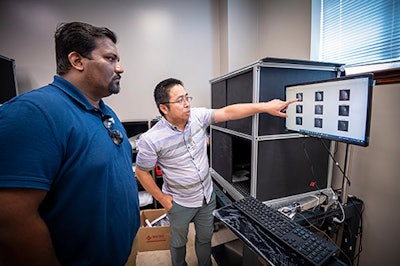
A high-resolution imaging technology originally developed to detect subsurface bruising in fruits could help better identify woody breast, spaghetti meat, white striping and other meat quality defects in poultry.
“Imaging technology can play a very important role in automating the process to ensure meat quality,” Yuzhen Lu, assistant professor in Mississippi State University’s (MSU) Department of Agricultural and Biological Engineering and the project’s principal investigator, said.
Breast myopathies impact the fibrousness, texture and overall consumer appeal of poultry. When products with meat quality defects are identified at processing, it is typically discarded because of its unappealing attributes, resulting in large financial losses.
“If the industry is not able to separate defective meat from the normal meat, they are losing money ultimately,” explained Anuraj Sukumaran, an MSU Department of Poultry Science assistant professor and the study’s co-principal investigator.
“If we can develop this technique, we can detect these defects earlier. That’s going to help the industry to provide consumers with the highest quality premium product.”
Scheduled for completion next year, the research project is funded by the U.S. Department of Agriculture (USDA) National Institute of Food and Agriculture (NIFA).
Automating a manual process for meat myopathy detection
Current methods to identify breast meat myopathies in poultry require manual inspection. An automated approach could have fewer errors, saving time, labor and money.
“There is a high demand from the poultry industry to develop a technique to detect meat quality defects without manual manipulation,” said Sukumaran. “One of the biggest things we can achieve would be to reduce a lot of the worker requirements for this problem.
Previously, sinusoidal-illumination imaging was used in horticultural crops like cucumbers, peaches and citrus to detect subsurface bruising and other defects. The technique measures changes in light waves, which provides enhanced detection of abnormalities, like breast meat myopathies.
Preliminary results reveal that SII technology can clearly differentiate between severity levels of white striping. More research is needed to improve the technique with poultry – especially given the moist nature of these environments – the researchers said.
“Ideally, we want to see if the technology works and then we will scale up the research to test it in a more realistic situation,” Lu added.


















